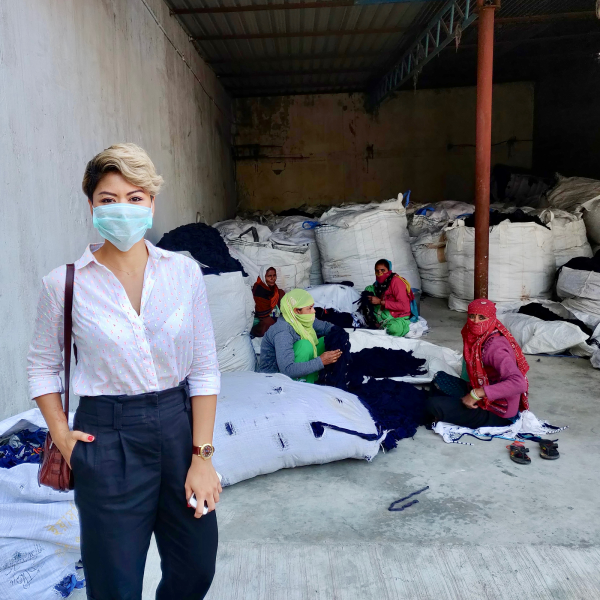KID REPORTERS’ NOTEBOOK
From Trend to Trash


Zhang En talks with 12-year-old Zelda in Selangor, Malaysia, about cutting down on environmental waste.
“Fast fashion” refers to clothing that is produced quickly and cheaply in styles seen on the runway. H&M, Topshop, and other big stores produce coats, sweaters, and jackets that reflect the latest trends at relatively low prices.
Retailers who cater to “fast fashion” typically use synthetic fabrics, which are composed of chemicals rather than natural fibers. Such materials contain toxic substances. When clothing made from synthetic fibers is washed, it sheds tiny, barely visible plastics and dyes that seep into the air and waterways.

Environmental engineer and fashion blogger Najah Onn visits a factory in India where cotton is recycled.
“There used to be two fashion seasons in a year, autumn/winter and spring/summer,” said Najah Onn. “But now, it seems that there’s a trend 52 weeks in a year, which is completely unsustainable.”
Onn is an environmental engineer who describes herself as a “conscientious fashionista.” In her blog, “fashinFidelity,” she raises awareness about the differences between fast fashion and ethically-produced, sustainable clothing
Fast fashion does more than harm the environment. It adversely affects garment workers, many of them based in India, China, Bangladesh, and other developing countries. Producing clothing quickly and cheaply often means dangerous working conditions, low wages, and a lack of basic human rights.

The scene in Bangladesh in 2013 after a building collapsed, killing 1,134 people. The building housed factories that produced clothing for American and European consumers.
“SLOW FASHION”
Onn, who is based in Australia, champions “slow fashion.” This means buying garments that are organic, vintage, or made from recycled materials.
Onn is also a proponent of creating one’s own look at home. She encourages young people to get involved in the effort.
Francesca Chen, 15, of Kuala Lumpur, Malaysia, is paying attention. She recently made accessories for her school play instead of buying them. “My friend and I turned leftover cereal boxes into two hats,” Francesca said. “The hats looked perfect.”
The teen cited another example. “When I found that my old jeans had become too tight below the knees,” she said. “I just cut them off and made shorts.”
Zelda, 12, of Selangor, has found yet another way to cut down on environmental waste. “I wear my siblings’ hand-me-downs,” she said. “They’re still in good condition and look nice.”
